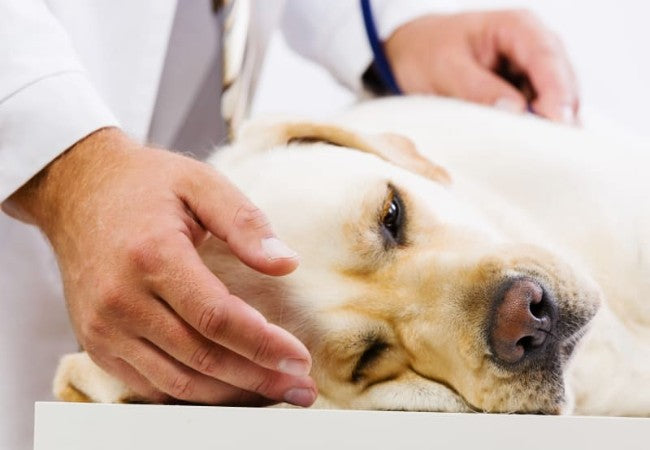Veterinary Guide to Canine Suppurative Hepatitis 2025 🐶🩺

In this article
Veterinary Guide to Canine Suppurative Hepatitis 2025 🐶🩺
By Dr. Duncan Houston BVSc
🧬 What Is Suppurative Hepatitis?
Suppurative hepatitis, often synonymous with bacterial cholangiohepatitis in dogs, is characterized by neutrophil‑rich inflammation and secondary bacterial infection in bile ducts and hepatic tissue. It may occur alongside or after bile stasis or gallbladder disease.
👥 Who Is Affected?
- Often adult dogs with cholestatic conditions—gallbladder mucoceles, bile duct obstruction, choleliths.
- Predisposing factors include raw diets, scavenging, enteritis, and immune dysfunction.
- Any breed, though older dogs with underlying biliary disease are at higher risk.
⚠️ Clinical Signs
- Lethargy, hyporexia, fever, vomiting and diarrhea—present in >70 % of cases.
- Jaundice occurs in about 25–64 % of cases, depending on obstruction severity.
- Ascites, hepatomegaly palpable in ~10 %, polyuria/polydipsia occasionally.
- Some dogs show signs of hepatic encephalopathy—e.g., disorientation, seizures.
🔍 Diagnostic Approach
- Blood testing: CBC shows neutrophilia; chemistry reveals elevated ALT/ALP/GGT in 80–98 %, bilirubin in ~64 %.
- Coagulation profile: assess for clotting abnormalities.
- Urinalysis: evaluate dehydration, bilirubinuria.
- Abdominal ultrasound: investigates gallbladder (mucocele), biliary dilation, hepatic echotexture changes, and abscesses.
- Fine‑needle aspirate or biopsy: confirm neutrophilic infiltration; culture identifies pathogens.
🛠️ Treatment Protocols
1. Aggressive Antibiotic Therapy
- Initiate empirical broad-spectrum antibiotics (ampicillin/amoxicillin + metronidazole).
- Adjust therapy based on culture and sensitivity from bile or hepatic tissue.
- Typical duration: 4–6 weeks to resolve infection and inflammation.
2. Supportive Care & Monitoring
- Hospitalize for IV fluids, antiemetics, and GI protectants.
- Manage pain, electrolytes, and hydration carefully.
- Liver support: SAMe, silybin, vitamin K to aid regeneration and clotting.
- Lactulose and low–low-toxic-protein diets to prevent hepatic encephalopathy.
3. Address Underlying Biliary Disease
- Surgical management of gallbladder mucocele or cholecystitis if present.
- Remove bile duct obstructions: stones, strictures.
4. Dietary Management
- Highly digestible, moderate‑protein, low‑fat hepatic diet reduces hepatic workload.
- Encourage small, frequent meals to support digestion and calorie intake.
5. Ongoing Monitoring
- Biochemistry tests every 2‑3 weeks—focus on liver enzymes, bilirubin.
- Reassess ultrasound if clinical signs persist or worsen.
- Complete the antibiotic course to avoid relapse or resistance.
📈 Prognosis
- Generally good with prompt, aggressive treatment; full recovery common.
- Guarded if bile duct obstruction, gallbladder disease, or chronic pathology coexist.
- Risk of recurrence if the underlying biliary disease isn’t resolved.
📱 Ask A Vet Telehealth Support
- 📸 Upload lab results and ultrasound images for remote review.
- 🔔 Treatment reminders for antibiotic doses, medications, and recheck appointments.
- 🩺 Virtual check‑ins to assess vitals, appetite, abdominal changes, and neurologic status.
🎓 Case Spotlight: “Ruby” the Beagle
Ruby, a 6‑year‑old Beagle, presented with fever, vomiting, and jaundice. Ultrasound showed a thickened gallbladder with sludge and hypoechoic liver patches suggestive of cholangiohepatitis. Fine‑needle aspirate confirmed neutrophilic hepatitis, and culture revealed E. coli and Enterococcus. Treated with IV fluids, ampicillin + metronidazole for 6 weeks, hepatic diet, SAMe/silybin, and gallbladder removal. Ask A Vet coordinated antibiotic dosing reminders, lab follow‑ups. Ruby recovered fully; labs normalized by week 4 and remained well at 6‑month recheck 🐾.
🔚 Key Takeaways
- Suppurative hepatitis is a bacterial, neutrophil-rich liver/bile-duct infection often linked to cholangitis or gallbladder disease.
- Common signs include fever, vomiting, jaundice, and abdominal pain.
- Diagnosis requires labs, imaging, and cytology/biopsy with culture.
- Treatment must be aggressive—combine antibiotics, supportive care, management of biliary issues, and nutritional support.
- Prognosis is favorable when treated aggressively and underlying causes are addressed.
- Ask A Vet telehealth provides crucial support—remote diagnosis, therapy coordination, home monitoring, and medication delivery 📲🐾
Dr Duncan Houston BVSc, founder of Ask A Vet. Download the Ask A Vet app to support your dog with suppurative hepatitis—get expert telehealth for diagnostics, therapy guidance, antibiotic management, imaging reviews, and long‑term health tracking 🐶📲






